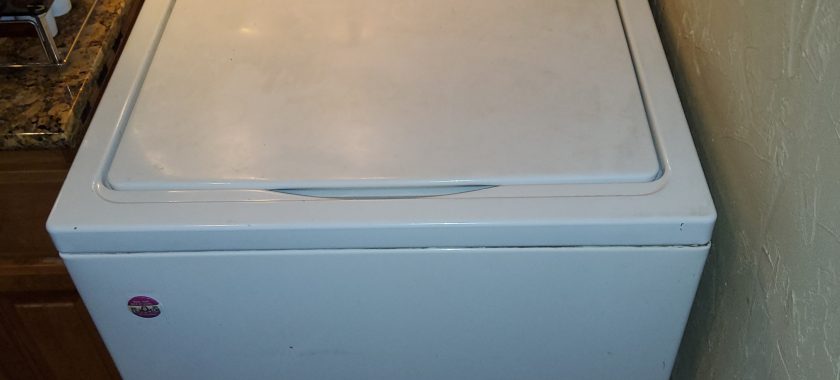A washing machine is one of the most frequently used appliances in any home. It handles heavy loads, spins at high speeds, and operates through multiple cycles that put strain on its moving parts. So, when you start hearing a knocking or banging sound during the spin cycle, it’s not just annoying—it’s a warning sign. This sound often indicates mechanical wear or loosened components inside the machine, most commonly a loose drum spider or worn drum bearings. Ignoring these noises can lead to extensive damage and costly repairs.
Let’s explore the possible causes, how to identify them, and what steps you should take to keep your washer running smoothly.
1. Understanding the Washer Drum and Its Components
The drum is the central part of the washer that holds and spins the clothes. It is supported by several key components, including the drum spider and bearings.
- The drum spider is a metal arm (usually made of aluminum or alloy) that connects the drum to the drive shaft. It provides structural support and balance during high-speed spins.
- The drum bearings are located at the back of the drum, allowing it to spin smoothly and quietly.
When either of these components fails, you may hear knocking, rumbling, or thudding noises—especially during spin cycles when the drum moves at maximum speed.
2. Loose Drum Spider: The Hidden Culprit Behind Loud Knocks
A loose or broken drum spider is a common cause of loud knocking noises. Over time, the constant motion and exposure to detergent, water, and vibration can corrode or weaken the spider arms. Once the spider becomes unbalanced, it causes the drum to move unevenly and strike the outer tub or cabinet walls.
Symptoms of a loose drum spider:
- Loud knocking or banging during the spin cycle.
- The drum wobbles when you spin it manually.
- Visible corrosion or cracks on the spider arm (visible after drum disassembly).
Unfortunately, repairing or replacing a drum spider requires significant disassembly and professional tools. In many cases, the part is integrated with the inner drum, so it may need a complete replacement.
3. Worn Bearings: The Silent Destroyer of Washer Drums
Another major cause of knocking or rumbling is worn bearings. Bearings allow the drum to spin freely and quietly. However, with time and moisture exposure, they can wear down or rust. When that happens, the drum no longer rotates smoothly, and you begin to hear deep, rhythmic knocking sounds.
Typical signs of worn bearings:
- A low rumbling or growling sound during spinning.
- The drum feels loose or has play when pushed up and down.
- Water leakage at the back of the machine (damaged bearing seal).
Once bearings are worn, they cannot be repaired—only replaced. Continuing to use the washer can damage the drum shaft and motor, leading to higher repair costs.
4. How to Distinguish Between Drum Spider and Bearing Issues
Although both issues cause similar noises, there are key differences you can observe:
| Symptom |
Likely Cause |
| Knocking or banging during spin |
Loose drum spider |
| Deep rumbling or growling sound |
Worn bearings |
| Drum moves unevenly side-to-side |
Drum spider issue |
| Drum feels rough or stiff when turned |
Bearing issue |
A trained technician can confirm the diagnosis by inspecting the drum assembly and rotating components.
5. Other Possible Causes of Knocking Noises
Before assuming the worst, check for simpler issues:
- Unbalanced loads: Large, heavy items like blankets or towels can shift unevenly during the cycle, causing the drum to hit the tub walls.
- Loose shock absorbers or suspension springs: These components keep the drum stable. When they weaken, vibration and knocking increase.
- Foreign objects: Coins, buttons, or small items can get trapped between the drum and the tub.
If the noise continues even after balancing the load, it’s time for a professional inspection.
6. The Risks of Ignoring Knocking Noises
Ignoring a knocking sound can lead to catastrophic damage. A damaged spider arm can cause the drum to detach and destroy internal components. Worn bearings can overheat and seize, damaging the motor or tub. Repairing these problems early can save you from having to replace the entire washer.
7. Professional Repair Is the Smart Choice
While some minor washer noises can be handled with basic troubleshooting, problems involving the drum spider or bearings require professional service. These parts are located deep within the washer and need specialized tools for safe removal and replacement.
A trained appliance technician will:
- Disassemble the washer safely.
- Inspect the drum spider, bearings, and shaft.
- Replace worn components with OEM parts.
- Reassemble and test the unit to ensure proper performance.
Attempting to fix these components without experience can worsen the damage or void your warranty.
8. Preventive Maintenance Tips
To reduce wear and prolong your washer’s life:
- Avoid overloading the drum.
- Run maintenance cycles with washing machine cleaner to prevent corrosion.
- Keep the machine level to prevent uneven spinning.
- Schedule regular inspections if your washer is over five years old.
A knocking noise in your washer should never be ignored. Whether it’s a loose drum spider or worn bearings, both problems indicate mechanical deterioration that requires immediate attention. Acting early can prevent costly damage and keep your laundry routine stress-free.
If your washer has started making unusual knocking or rumbling noises, don’t wait until it stops working completely. Contact Chula Vista Appliance Repair Company for fast, professional, and affordable service. Our experienced technicians will quickly identify the cause and restore your washer’s smooth and quiet operation.
Call Chula Vista Appliance Repair Company today and schedule your repair!
Contact us
(619) 880-5508


